Taking Home the Gold at the Annual Millbrook Horse Trials by Sharon King Hoge
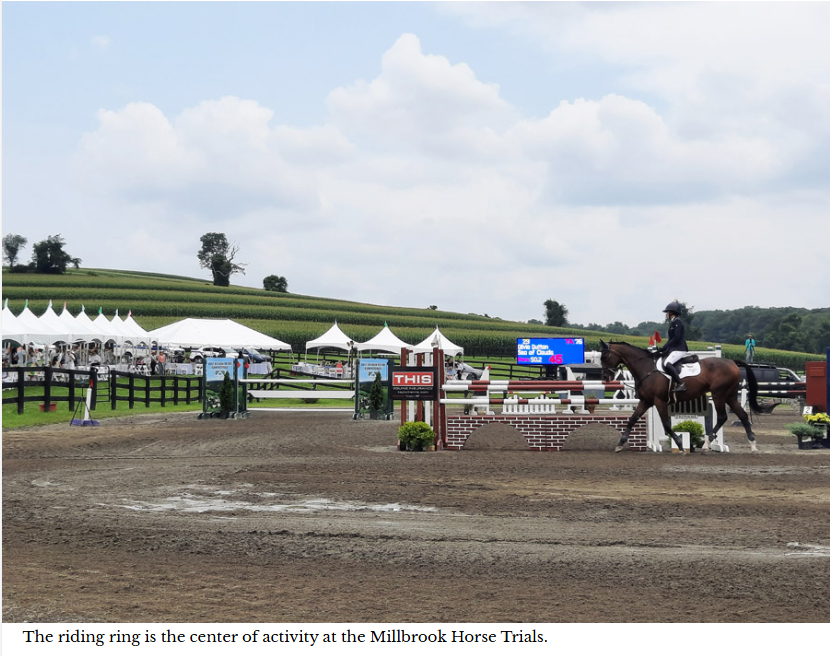
The same weekend the Olympics were opening in Paris, Millbrook, NY was holding a world class sporting event of its own. The annual Millbrook Horse Trials is an equestrian triathlon. Over four days, horses and riders compete in three phases: dressage, cross country, and stadium jumping.
Besides viewing and chatting at ringside seats in tents surrounding the event, spectators shop in a tent featuring local and specialty vendors, sample dishes at the food truck fair, lead children through the petting zoo. A Sip and Shop event featured a conversation between Event Sponsor Barbara Tober and Sex and the City creator Candace Bushnell about the value and importance of horsemanship for women — confidence, authority, self-assurance. Read more
BEYOND THE BALL: A WEEKEND OF ACTIVITIES IN PARIS WITH THE AMERICAN FRIENDS OF VERSAILLES
New York Social Diary – by Sharon King Hoge
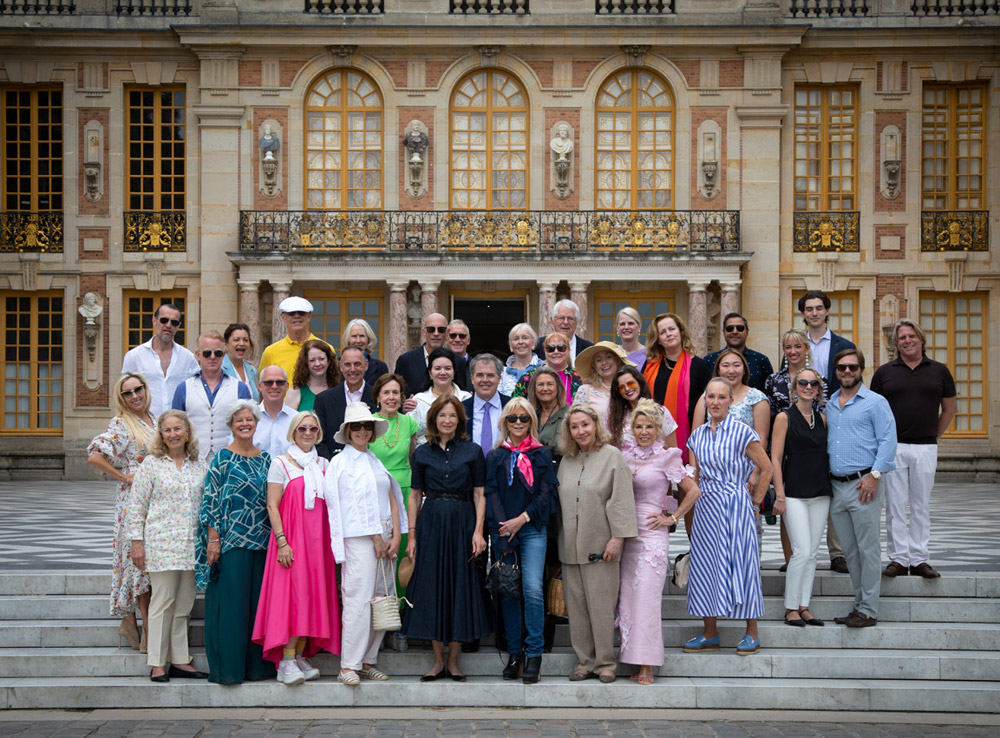
When the American Friends of Versailles assembled in Paris last summer to celebrate their 25th anniversary, the Gala Dinner and Dance held in the Palace’s Grand Trianon was surrounded by an extended weekend of glamorous historic and cultural events. Concerts, receptions, tours, and a picturesque picnic kept the visitors immersed in French culture and friendship from Friday morning right through to Monday night.
Breakfast at the Dior headquarters launched the visit. Before store hours the elegant store on Avenue Montaigne opened to the group for coffee and croissants in the Café and then private tours of its acclaimed museum. Read More
——————————————————————————————————
INTERNATIONAL VERSAILLES PATRONS CELEBRATE WITH A BALL AT THE CHATEAU’S GRAND TRIANON
New York Social Diary – by Sharon King Hoge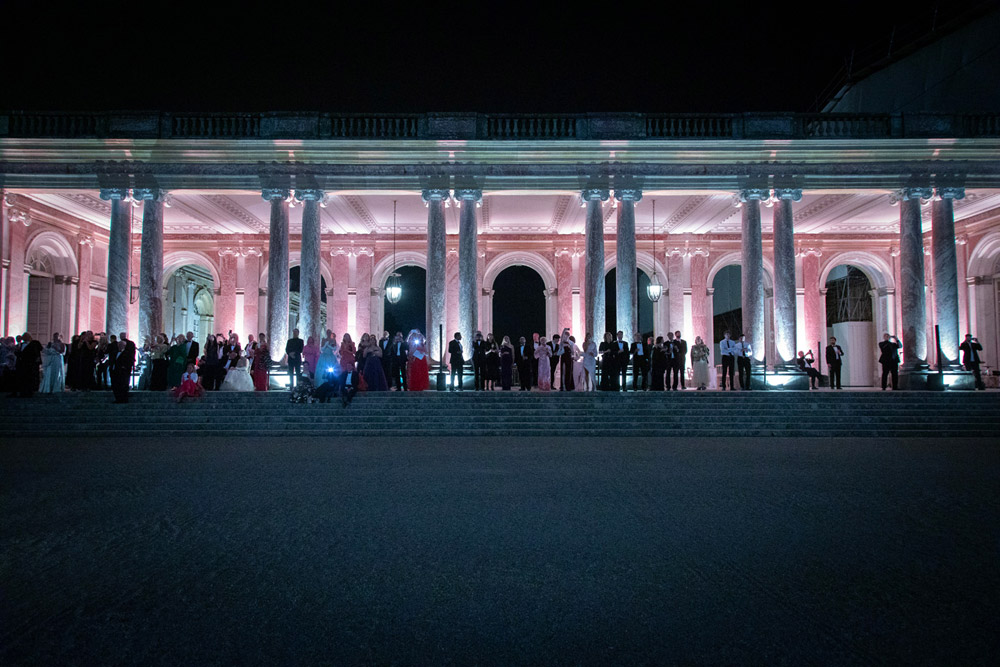
The American Friends of Versailles celebrated their 25th anniversary with a full weekend of events in Paris which helped raise funds for restoration projects at the palace and its gardens. A capstone of the session was a gala ball held in the marble corridors of the Grand Trianon in the Versailles gardens.
Built by Louis XIV as an elegant retreat apart from the strict etiquette of the Court, the Trianon was a lavish setting for AFV cocktails, dinner, fireworks, and dancing. Read More
—————————————————————————————————
A Spectacular Trip for a Spectacular Cause
New York Social Diary – by Sharon King Hoge
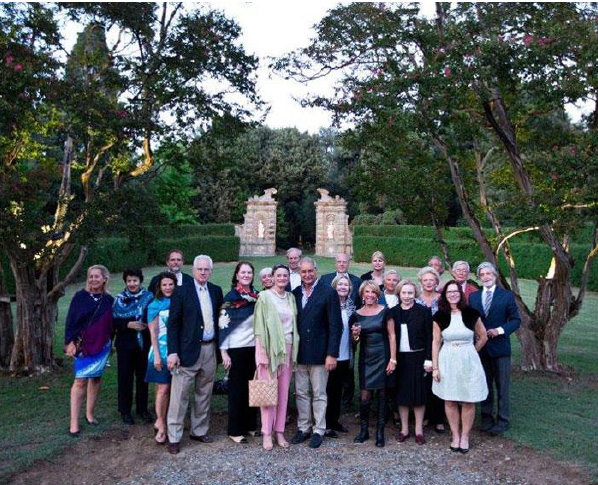
New York SOCIAL DIARY article American Friends of Versailles 2015
________________________________________________________
Northwest Connecticut Land Conservancy’s Annual Midsummer Party for Conservation
From Cottages & Gardens Magazine
by Sharon King Hoge
Over 200 supporters of Northwest Connecticut Land Conservancy (NCLC) gathered on the grounds and gardens of Maywood at the annual Midsummer Party for Conservation. Leni and Board Member Peter May host the affair on their Litchfield County estate with views over the Roxbury hills. Following cocktails on the terrace, guests dined lakeside under a festive tent.
Dignitaries US Senator Richard Blumenthal and US Congresswoman Jahana Hayes honored the work of previous Board President Hiram Williams and reminded the assembled guests that “to drive through any part of Northwest Corner Connecticut becomes a vacation.”
Midway through the evening, an unexpected deluge with constant lightning flashes, sheets of rain, and gusting winds sent guests to the refuge of the greenhouse. The storm soon passed and undeterred party goers returned to their tables to dine and enjoy a video describing the significant goal of protecting 30 percent of the land by 2030.
NCLC permanently protects 13,000 acres of vast connected natural areas in Litchfield and northern Fairfield Counties. In concluding remarks Board President Marjorie Feldberg noted that the evening’s extreme weather underscored the importance of the Conservancy’s efforts to build climate resilience and protect biodiversity by conserving the rolling hills, valleys, and iconic farms of Northwest Connecticut.
Linking Significant Structures to the 2019 “Living Landmarks”
Recognizing New Yorkers who have made outstanding contributions to the city, every year the New York Landmarks Conservancy designates Living Landmarks. At a November gala hosted by President Peg Breen and emceed by Living Landmark David Patrick Columbia, six more were named adding to the list of 177 cited over the past 26 years.
In addition to their various accomplishments, all are also associated with significant city structures. To further commemorate the 2019 Living Landmarks, here is a list of benchmark buildings linked to each of their lives.
The structures may be familiar or new discoveries, but each of them merits a closer look.
Living Landmark MARK MORRIS
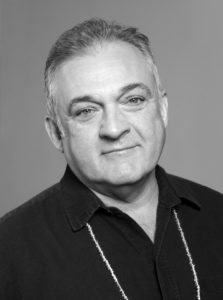
Founder of his namesake dance company, creator of dances for opera and ballet, Mark Morris has been hailed as “the most successful and influential choreographer alive.” In 2001 he opened the Mark Morris Dance Center in Brooklyn, His memoir “Out Loud” illuminates his belief that “Dancing is for anybody.”
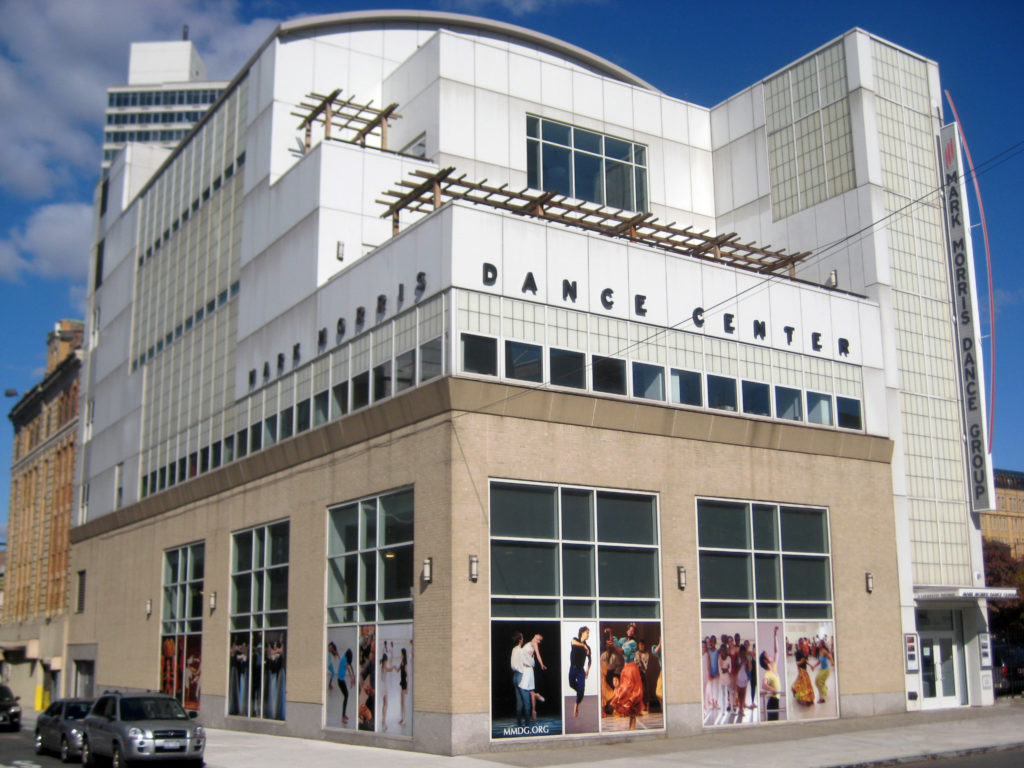
MARK MORRIS DANCE CENTER
3 Lafayette Avenue, Brooklyn While in residence at the Theatre de La Monnaie in Brussels, the Mark Morris company recognized the unifying benefits of staff and dancers working under the same roof. In 1998, they purchased a derelict building in Fort Greene just a block from BAM. After four phases of construction the structure, designed by Fred Bland of Beyer Blinder Belle Architects and Planners, incorporates a home for the company plus subsidized rental space for local artists, classrooms for outreach programs and studios for dance classes in jazz, tap, ballet, hip hop, belly dancing and more for students of all ages and abilities.
Five stories incorporate seven column-free studios with wood-sprung floors, spacious lockers and showers, a wellness center, performance spaces, offices (Morris has a bathtub installed in his office). The top floor main studio is the largest unobstructed dance studio in the city.
Besides attending performances, visitors can step into the first floor where a lounge provides space for snacking and conversing.
The studio is a short walk from the Nevins stop of the #2,3,4,5 trains and from Atlantic Avenue stops of the stop of the B,Q, #2,3,4,5 trains and stops of the B38, B39,B48, and B62 buses
Living Landmark TED MATHAS

Living Landmark Ted Mathas oversees the nation’s largest mutual life insurer which celebrates its 175th anniversary next year. After joining the company in 1995 he became CEO in 2008 and the next year Chairman of the Board of Directors. In addition he serves on the Board of the American Council of Life Insurers, the American Museum of Natural History, and the Partnership for New York City.
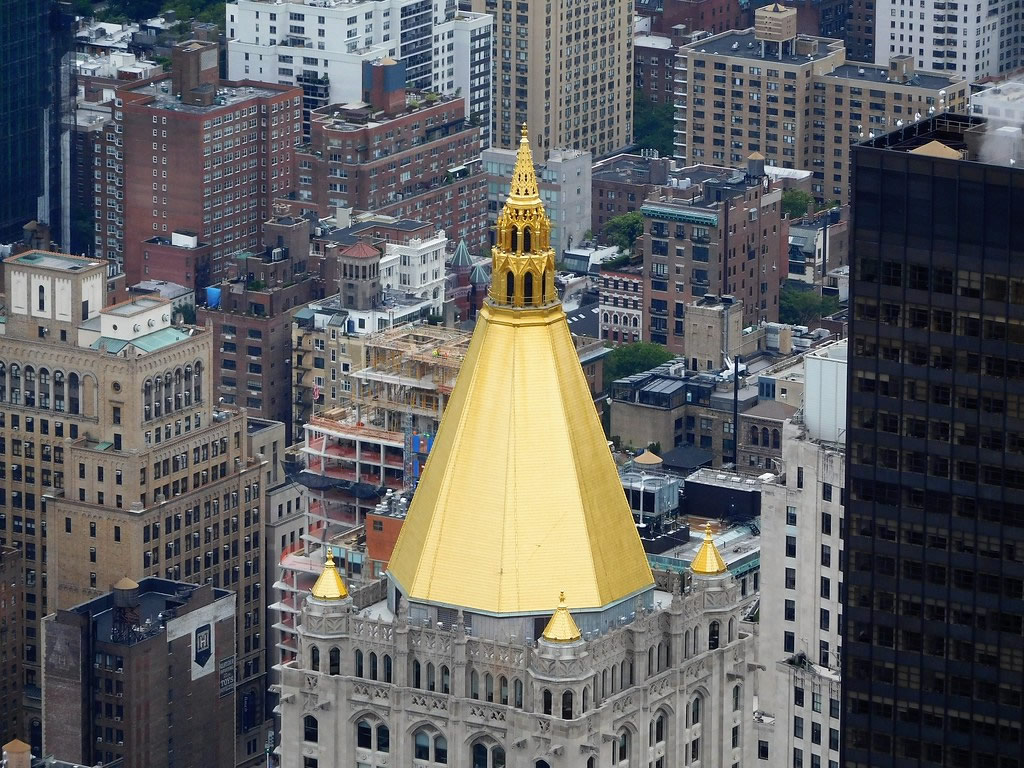
THE NEW YORK LIFE INSURANCE BUILDING
51 Madison Avenue, Manhattan The last NYC skyscraper designed by renowned architect Cass Gilbert, New England Life occupies the full block between 26th and 27th Streets and Madison Avenue and Park Avenue South. Combining Gothic details and Moderne massing, it is topped with “the Golden Crown of New York,” a pyramidal gilded roof. Originally copper, the roof was restored with 25,000 gold leaf tiles, earning a 1995 Merit Citation Award from the Landmarks Conservancy.
Dubbed “the Cathedral of Insurance,” it’s a National Historic Landmark listed on the National Register of Historic Places. Passersby can come inside to admire the 24 karat gold leaf vaulted coffered ceiling and war memorial plaques in the marble hallway. Behind two of the grand marble columns, slight indentations in the floor mark the spots where elevator starters stood for over forty years.
A small shop in the lobby sells snacks and notions.
The New York Life Insurance Building sits atop the 28th Street stop of the #6 downtown subway and near stops of the BXM 18, BXM3, BXM4, QM10 buses
Living Landmark CAROLE BAILEY FRENCH
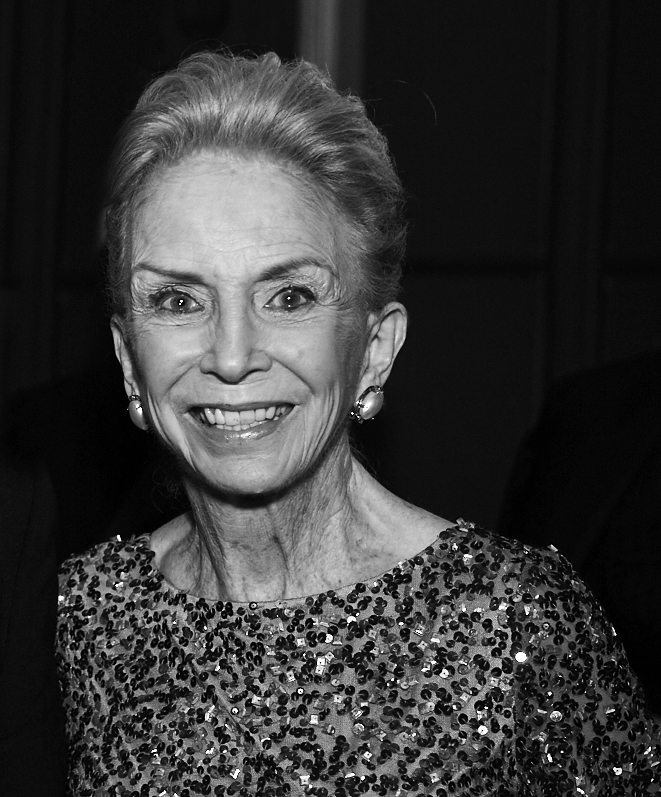
President of the St. Bartholomew’s Conservancy, Carole Bailey French oversaw multi-million dollar renovation of the iconic church’s elaborate dome, a project which earned her the Landmark Conservancy’s 2018 Lucy G. Moses Award. A native New Yorker, she serves on the board of he Metropolitan Opera Guild and works with a number of the city’s cultural and charitable organizations.
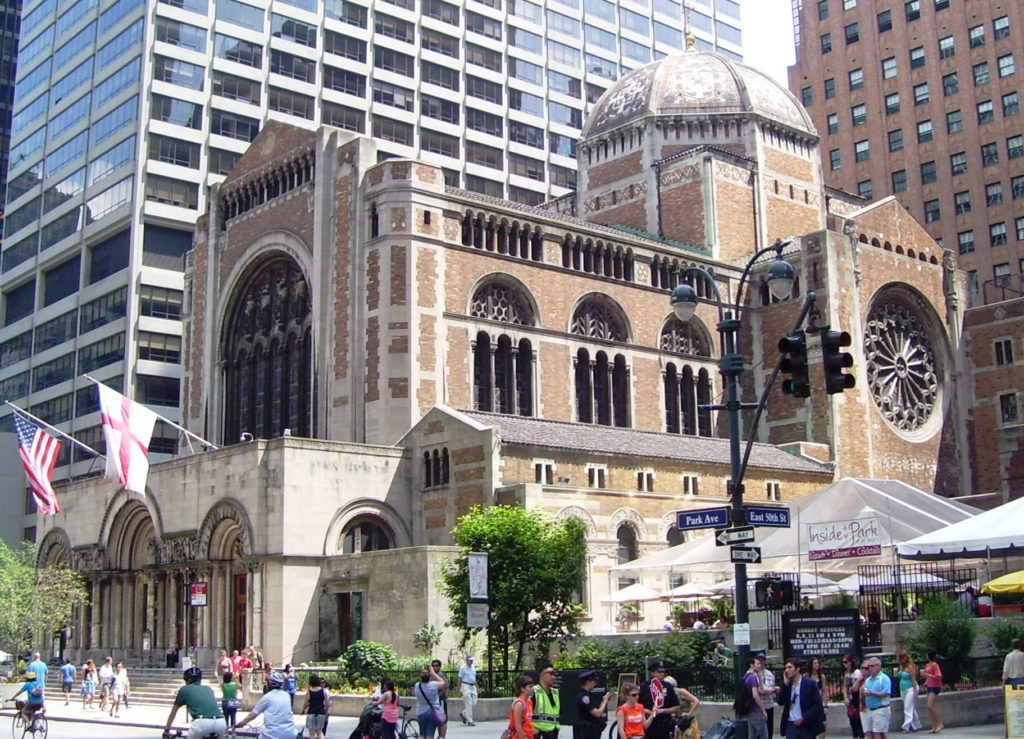
ST. BARTHOLOMEW’S CHURCH
325 Park Avenue, Manhattan Fondly called St. Bart’s, the Episcopal parish church celebrated the centennial of its Park Avenue location in 2018. Defying developers, in 1967 the current design by Bertram Goodhue was designated a landmark by the New York Landmarks Preservation Commission. Now a National Historic Landmark it is cited as an example of early 20th-century ecclesiastical architecture.
Originally paid for by the Vanderbilt family, the remodeled church retains the triple Romanesque Revival portal designed by Stanford White with Renaissance-inspired tympana sculptures. Variegated salmon and cream-colored bricks enclose the vast, unified barrel-vaulted space. The dome, substituted for a spire that was never built, is tile-patterned outside with a polychrome Hispano-Moresque interior. Inside, stained glass windows soar over walls of arches.
Besides stainedglass windows by Hildreth Meiere and a baptismal font by Bertel Thorvaldsen, the church boasts the city’s largest musical instrument. Requiring its own curator, the pipe organ has five keyboards and more that 12,000 pipes and is a current restoration project.
Beside the church, a white tent encloses “Inside the Park” restaurant.
St. Bartholomew’s is a block east of the 51st Street stop of the #6 subway train.
Living Landmark, H.CARL McCALL
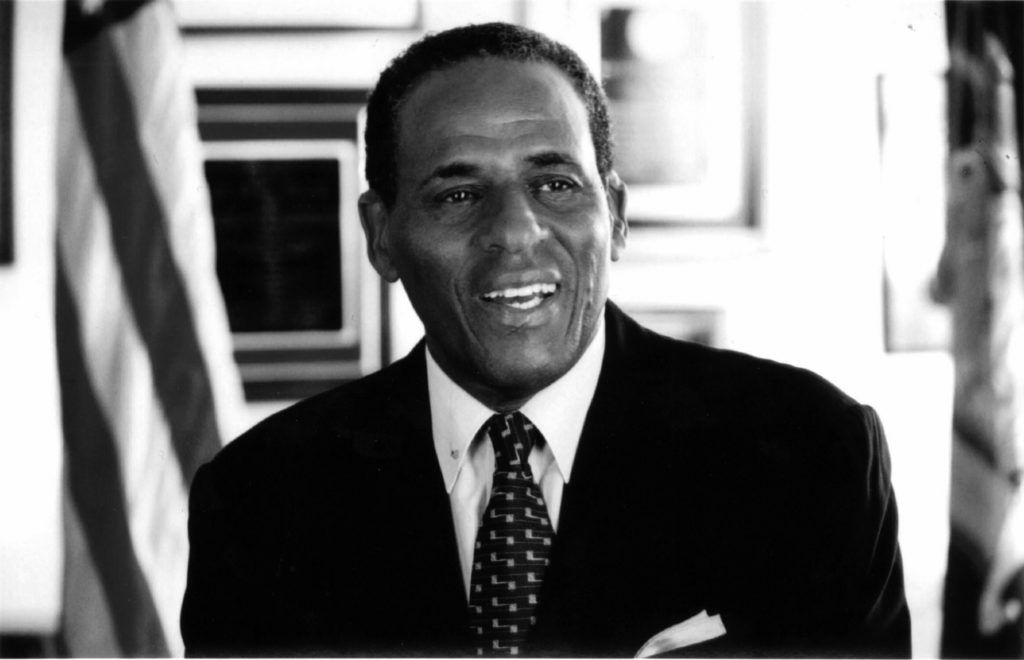
An ordained minister, Carl McCall has had an illustrious nearly 50-year career in public service, serving as New York State Senator and Comptroller, Ambassador to the United Nations, State Human Rights Commissioner, Port Authority Commissioner, President of the New York City Board of Education. Recently retired as Chairman of the State University of New York Board of Trustees where he oversaw and expanded scholarship opportunities, he is currently establishing McCall Scholarships for students wishing to attend a State college.
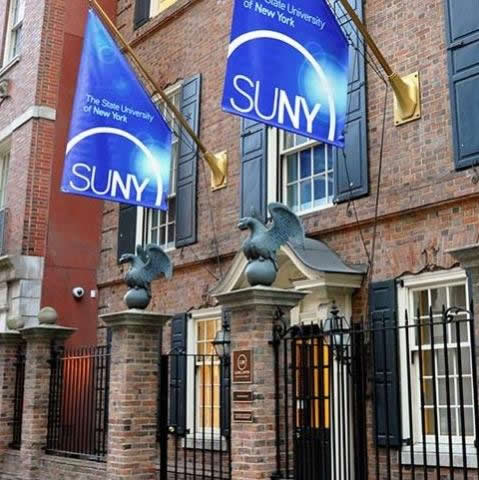
SUNY GLOBAL CENTER
116 East 55th Street, Manhattan A distinguished landmark five-story Georgian style mansion in the heart of midtown Manhattan is headquarters of the State University of New York. Now almost engulfed by high-rises, it was designed by William L. Bottomley as home to Royal Baking Powder Company heir William Zeigler, Jr. Constructed in 1927 on the site of two former townhouses, the 37-foot wide Flemish bond red brick townhouse was one of the last grand private homes built in Manhattan.
Remodeled with offices in the 1950’s, its distinctive exterior is unaltered: a dramatic bowed arch entrance pediment framed by a grand brick and iron fence which is topped with cast iron eagles. A striking and rare relic of the last glamorous years before the Great Depression, it is a unique and versatile setting for educational, non-profit, corporate functions and private events.
The SUNY Global Center is two blocks north and one and a half blocks west of the Lexington Avenue stop of the E,M subway trains and a block west of Lexington Avenue stops of the M102, M103 buses
Living Landmark EMILY K. RAFFERTY
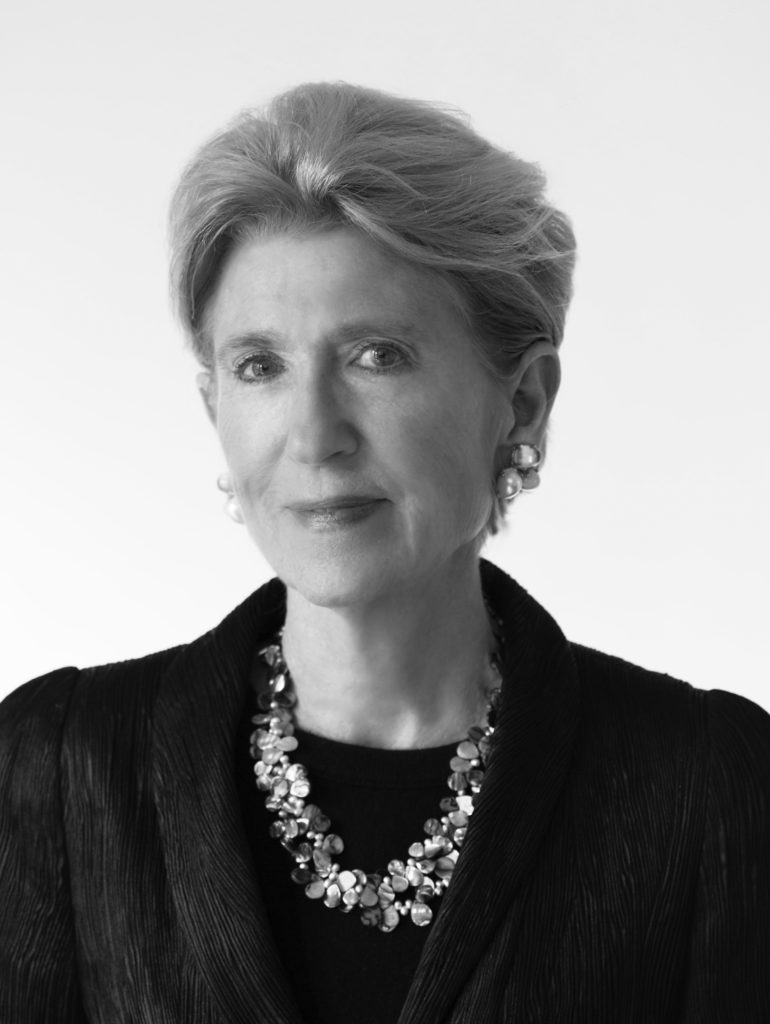
After a 40 year career at the Metropolitan Museum, Emily Rafferty is President Emerita. During her tenure she undertook a number of important restoration and redesign projects, bolstering the museum’s status as one of the world’s great cultural institutions.
Her long history of philanthropy and volunteerism includes work with the Federal Reserve, NYC & Company, and the 9/11 Memorial & Museum.
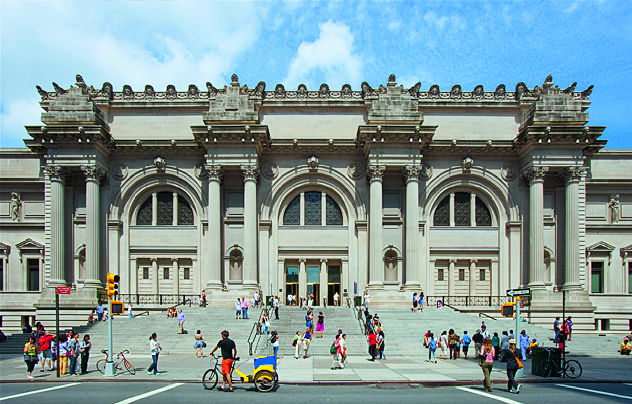
THE METROPOLITAN MUSEUM
1000 Fifth Avenue at 82nd Street In its third location since it was founded in 1870, the Met Museum has continued to grow and expand with the original Ruskinian Gothic structure surrounded by later additions. The current Beaux-Arts façade and Great Hall designed by one of the founding trustees, Richard Morris-Hunt, opened to acclaim in 1902 as “a public building approaching in dignity and grandeur the museums of the old world.”
From 1971-1991 the museum implemented a comprehensive architectural plan by Kevin Roche and John Dinkeloo and Associates which added the Robert Lehman Wing (Old Masters and Impressionist and Post-Impressionist works) , the Sackler Wing which houses the Temple of Dendur, the American Wing with period rooms, the Michael C. Rockefeller Wing for arts of Africa, Oceania, and the Americas, the Lila Acheson Wallace Wing (modern and contemporary art), and the Henry R. Kravis Wing (European sculpture and decorative arts).
Since 1998 expansion has incorporated space for arts of Korea, Asia, Near East, Arabia, Turkey, ancient Greece and Rome, Oceanic and Native North America, 18th-20th Century.
Currently on view and running through next spring, four bronze sculptures of “The NewOnes, will free Us” by Kenyan-American artist Wangechi Mutu are positioned in four niches in the façade which Morris-Hunt originally designed to house free-standing sculptures. This commission will change annually.
The MET is four blocks west and four blocks south of the #4,5,6 subways to 86th Street. Bus lines are BXM11, BXM4, M2, M79-SBS, M86-SBS
Living Landmarks BARBARA AND DONALD TOBER
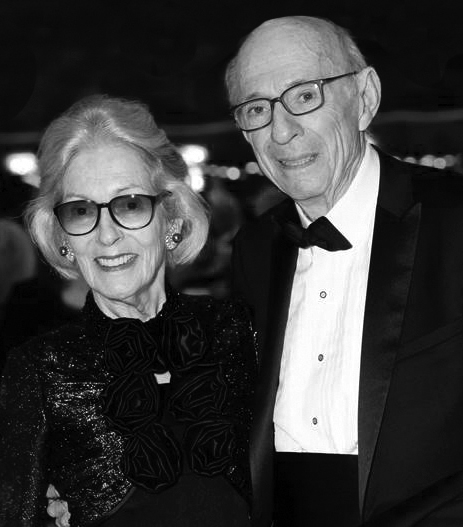
Sugar Foods Chairman and CEO Donald Tober is a long-time is a two-decades Board member of the Landmarks Conservancy Board Member and also helped found City-Meals-on-Wheels. Barbara, a former editor of BRIDES Magazine is President Emerita of the Museum of Arts and Design. Generous patrons of a host of NYC organizations: the Lighthouse Guild, the Police Athletic League, the American Cancer Society, the UJA federation, Publicolor, the National Dance Institute, both Tobers are fond of old buildings being repurposed for today.
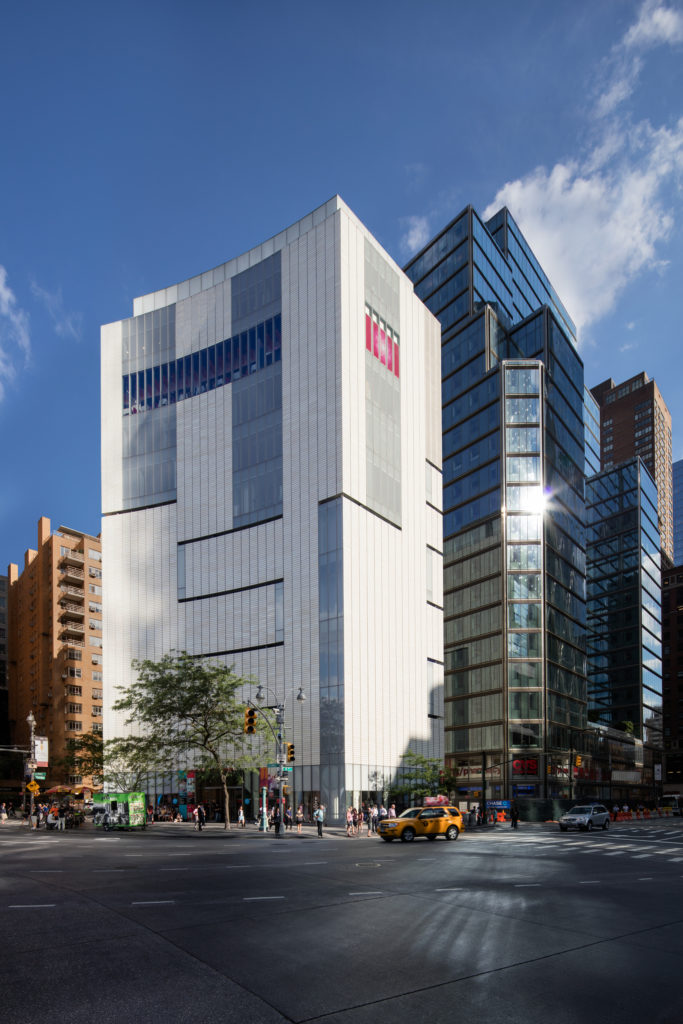
THE MUSEUM OF ARTS AND DESIGN
2 Columbus Circle, Manhattan Originally designed by Edward Durrell Stone as a gallery to display the collection of Huntington Hartford, the building was acquired in 2002 by the American Craft Council, renamed the Museum of Arts and Design. Controversial changes to the structure sparked a preservation debate, but the new 2008 design by Brad Cloepfil of Allied Works Architecture features a textured façade of glazed terra-cotta and fritted glass reflecting MAD’s craft heritage and permanent collections.
Prominently situated on Columbus Circle it includes four floors of exhibition galleries, an education center with multi-media access to primary source materials, hands-on classrooms, three artists-in-residence studios.
Free public access is provided to a ground floor gift shop and the Robert Restaurant with city views on the fifth floor.
Right on Columbus Circle, MAD is atop the #1, A,B,C,D subway lines and M5, M20, and M104 buses
——–TO TOUR THE LANDMARKS—–
PROPOSED PUBLIC TRANSIT ITINERARY
It is possible to visit all six buildings within a few hours, traveling by public transit:
From midtown Manhattan, I took the #4,5 subway to Nevins Street and walked two blocks down Flatbush Avenue, taking a left at the corner of Lafayette Avenue to the Mark Morris Dance Center.
Retracing my steps to Nevins, I took the #4,5 to 14th Street and crossed over to the #6 train to 28th Street. New York Life is across Park Avenue.
I walked through the handsome corridor of New York Life to Madison Avenue and caught a bus up to 51st Street and walked a block east to St. Bartholomew at Park and 51st.
Walking up Park Avenue to 55st Street, I turned left and found the SUNY Global Center on the south side between Park and Lexington Streets..
Walking to Lexington and turning left up to 59th Street, I caught the #6 train to 77th Street and then walked west to the Metropolitan Museum at 5th Avenue and 82nd Street. Walking north up 5th Avenue to 79th Street, I caught the M79-SBS crosstown bus to the corner of Central Park West and 81st Street where I descended to the subway and caught the B train to the Museum of Arts and Design at Columbus Circle. The Museum of Arts and Design is on the south side of the circle.
